🧵THE BAKHMUT CRUCIBLE
Part 3 - Shell Game: Ukrainian Ground Forces' Unstable Command Structure
Zaluzhny's replacement by Syrsky is a timely reminder to examine the AFU chains of higher command, which are extraordinarily flexible and irregular entities
TLDR: Syrsky Schmyrsky
Part 3 - Shell Game: Ukrainian Ground Forces' Unstable Command Structure
Zaluzhny's replacement by Syrsky is a timely reminder to examine the AFU chains of higher command, which are extraordinarily flexible and irregular entities
TLDR: Syrsky Schmyrsky

A caveat first: this study is very limited in its source material so several details still need confirmation
A "rule of three separate confirmatory reports" can help with accuracy, along with recalibrating source scrutiny. Avoid spoon feeds, question all
A "rule of three separate confirmatory reports" can help with accuracy, along with recalibrating source scrutiny. Avoid spoon feeds, question all
https://twitter.com/MNormanDavies/status/1521809763020988417
The target is a difficult one because it deliberately minimizes its signature, while emitting much spurious signal detail
Just one person on the task? That is an overload and takes much more time. Ideally a team can better focus on separate stages of this complex process
Just one person on the task? That is an overload and takes much more time. Ideally a team can better focus on separate stages of this complex process

But a first step is to build upon what we already know of the target. It's still about Bakhmut (Artyomovsk)
In this case a confluence of AFU logistical concentration onto the center of its eastern deployments: Bakhmut is the lynchpin of Kiev's war effort
In this case a confluence of AFU logistical concentration onto the center of its eastern deployments: Bakhmut is the lynchpin of Kiev's war effort
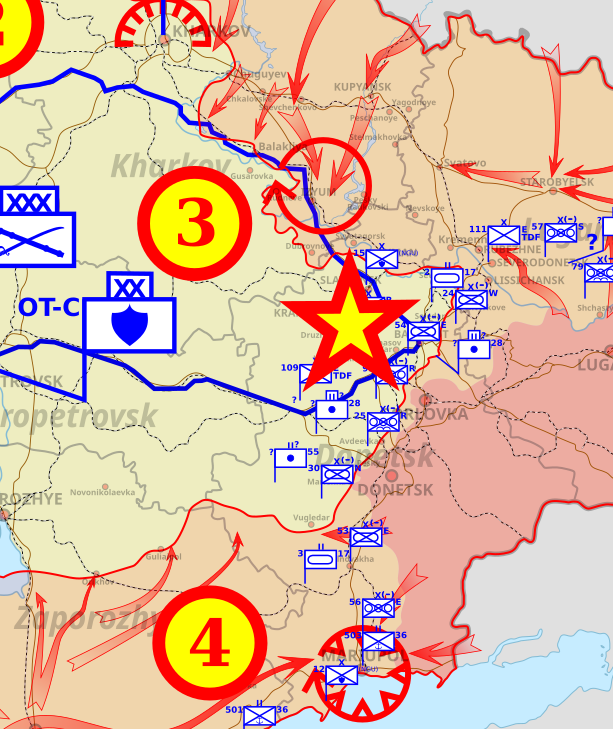
Lines of communication and AFU command structure put clear emphasis on and around that main Bakhmut logistic and defensive hub. Colonel-General Syrsky was the highest field rank in its deployed formations. Syrsky's Khortitsya covered it all
But the situation is very abnormal
But the situation is very abnormal
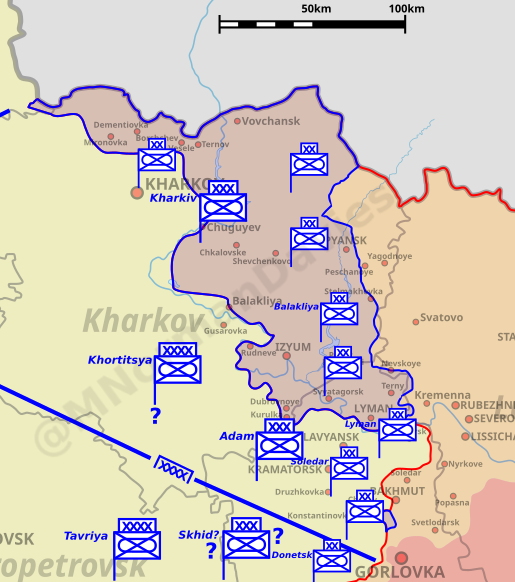
THE AFU's POLITICAL FRICTION
Deployed AFU forces fight in a spastic or retarded command structure. To be clear, by using such terms I pretend no insult or diagnosis against individuals within AFU hierarchies
The organization appears handicapped by cultural and political factors
Deployed AFU forces fight in a spastic or retarded command structure. To be clear, by using such terms I pretend no insult or diagnosis against individuals within AFU hierarchies
The organization appears handicapped by cultural and political factors

Despite some prejudice to the contrary, armies are complex and intelligent organisms processing vast detail to make difficult decisions on a large scale
But in this sense the AFU suffers slower-than-usual cognition, like a brain with clots and deformed neural and nerve paths
But in this sense the AFU suffers slower-than-usual cognition, like a brain with clots and deformed neural and nerve paths

Armies are normative in this basic sense of how their organization and command structure can reveal their cognitive processes and other functions
Any deviations from the norm can help identify exceptional improvement or impediment to performance in an army's work
Any deviations from the norm can help identify exceptional improvement or impediment to performance in an army's work
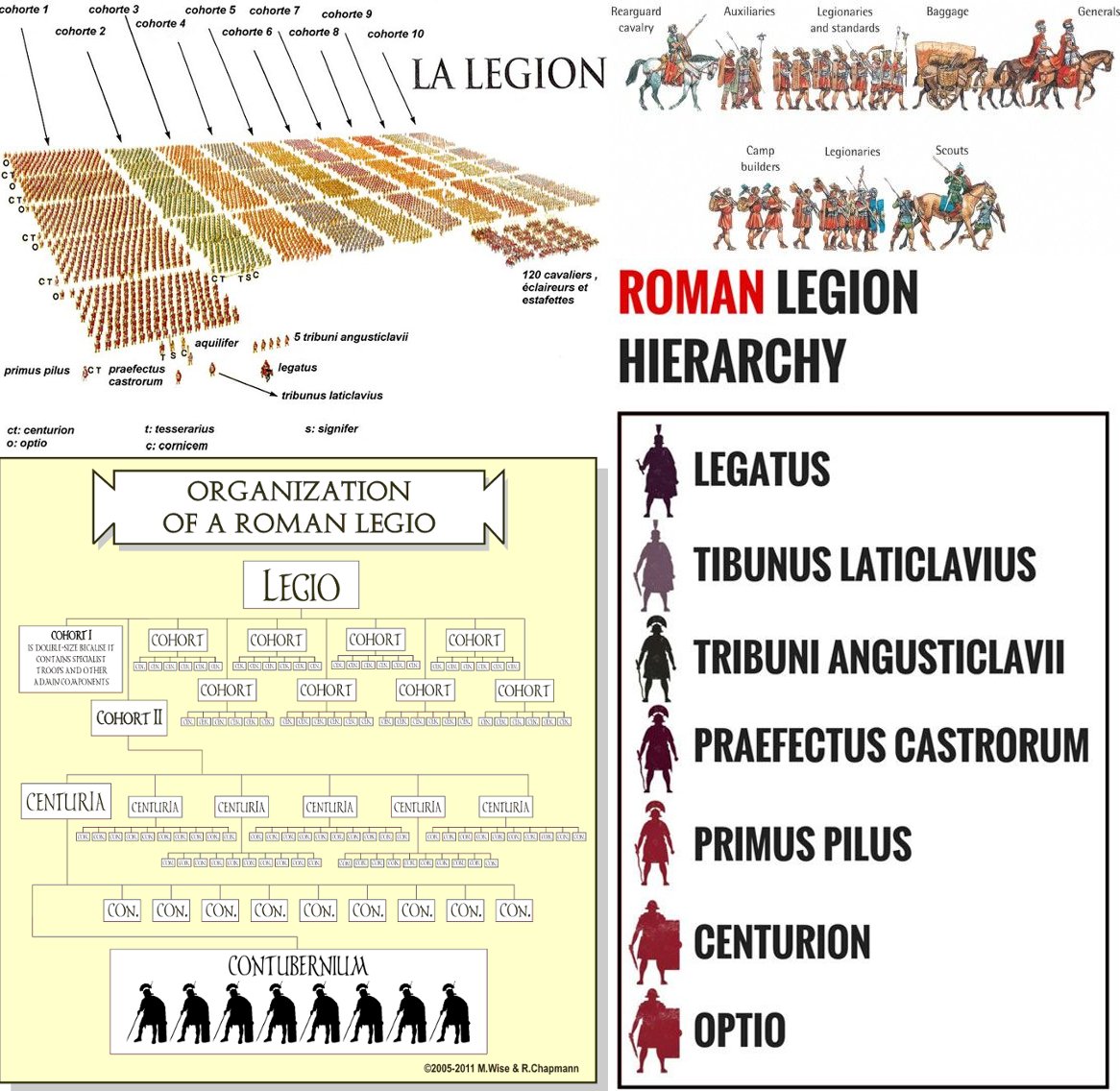
Some definitions first. Organizational cognitive deficiency may be discerned in the overlap between the AFU's service bureaucracies and their deployed force hierarchies
This is not about service branches and office cubicles. The distinction is crucial

This is not about service branches and office cubicles. The distinction is crucial
https://twitter.com/MNormanDavies/status/1755745731053511128
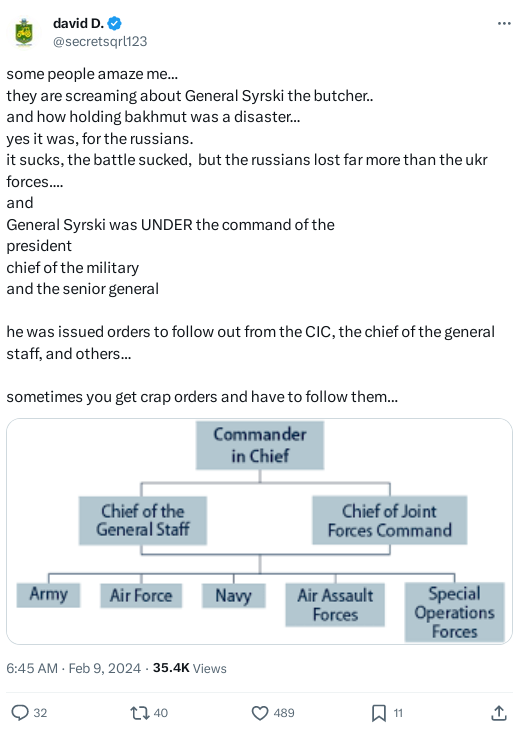
"AFU structure" here denotes also National Guard (NGU) and others under higher AFU field command
As @ArmchairW noted, this compares to WW2's Wehrmacht heading Waffen SS divisions operationally. And NGU was first to officially parade openly Nazi AZOV Movement and Svoboda ultras

As @ArmchairW noted, this compares to WW2's Wehrmacht heading Waffen SS divisions operationally. And NGU was first to officially parade openly Nazi AZOV Movement and Svoboda ultras


To penetrate the subject our study must examine the behavior of a uniquely Ukrainian ad hoc formation structure
In loud publicity of UAV video and KIA hagiography, the AFU (and NGU etc) advertise mostly by establishment brigade and (less often) organic battalion formations
In loud publicity of UAV video and KIA hagiography, the AFU (and NGU etc) advertise mostly by establishment brigade and (less often) organic battalion formations
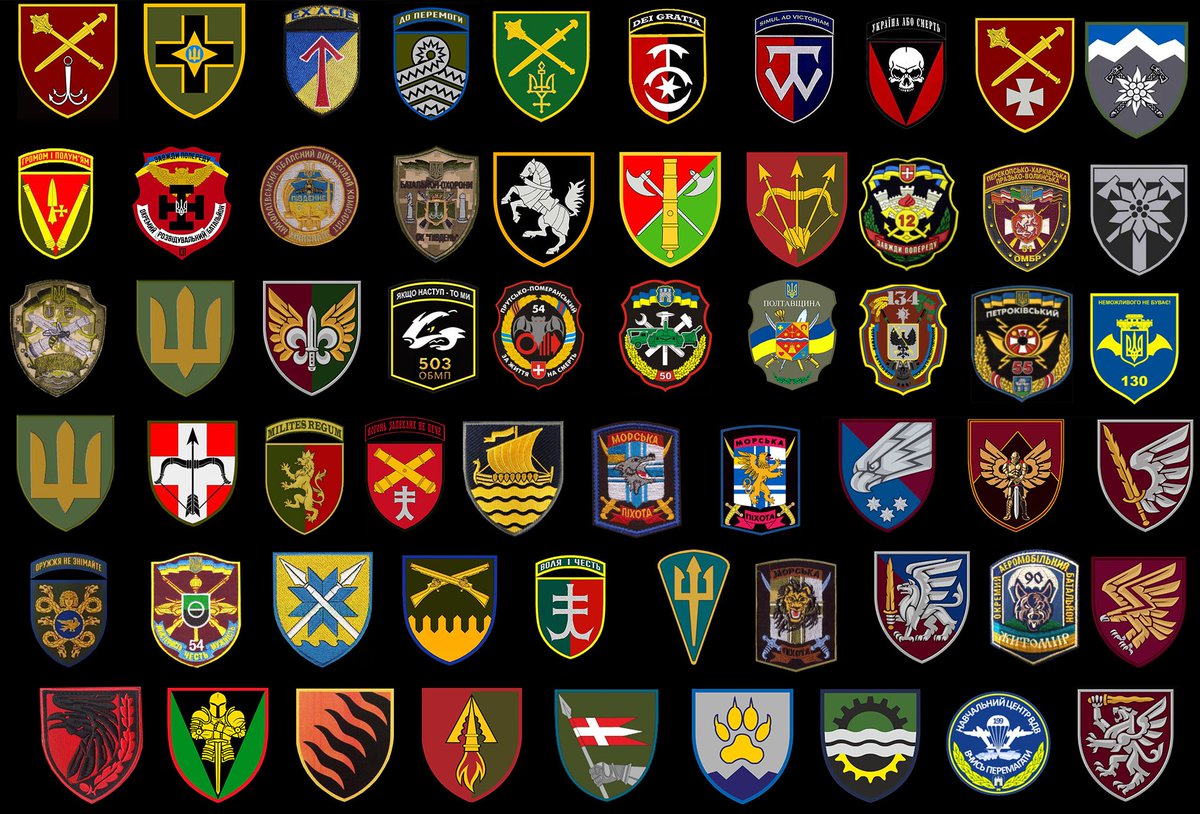
The impression from such AFU, NGU and other publicity is very misleading
In fact, Ukraine's entire fighting organization is improvized mixture and modification around established formations. That aspect applies especially to its highest field commands down to the brigade level
In fact, Ukraine's entire fighting organization is improvized mixture and modification around established formations. That aspect applies especially to its highest field commands down to the brigade level

Ad hoc improvization can apply to every level of AFU field command from the most basic unit, the company, to the highest army-level formation, the 'OSUV'
Such are the actual commands at work, though brigade and lower often keep their original status if not wholly reconstituted
Such are the actual commands at work, though brigade and lower often keep their original status if not wholly reconstituted

To be clear: all armies adjust their force structure to suit circumstances
But AFU does so in advance, as if clairvoyant. In this respect the AFU field command system's most conspicuous anomaly is its absence of any division-level (and higher) formations
But AFU does so in advance, as if clairvoyant. In this respect the AFU field command system's most conspicuous anomaly is its absence of any division-level (and higher) formations
https://twitter.com/MNormanDavies/status/1572952464441081858
Brigade is the highest level of non-improvized formation deployed by the Ukrainian ground forces
In a conventional or traditional force structure the next-highest level is division, which Ukraine started abolishing around a decade ago in a wide force restructure
In a conventional or traditional force structure the next-highest level is division, which Ukraine started abolishing around a decade ago in a wide force restructure
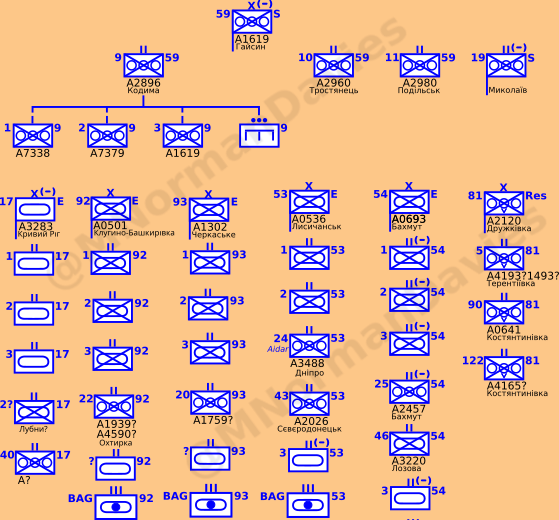
Note here that this 'division' term is not to be confused with so-called divisions in Ukraine's artillery/rocket groups and brigades
Those 'divisions' (дивизионы) are actually cognate, in a modern military register, with battalion-level tube formations
Those 'divisions' (дивизионы) are actually cognate, in a modern military register, with battalion-level tube formations
https://twitter.com/MNormanDavies/status/1662151903445405696
One fix? Kampfgruppen, combat teams/commands, task forces: all taking extra time to form at different levels of the organization
When lacking fixed HQ structures more decisions and appointments must be made at all levels. Improvization becomes a very overrated military virtue
When lacking fixed HQ structures more decisions and appointments must be made at all levels. Improvization becomes a very overrated military virtue

As @witte_sergei noted on this, WW2 German Kampfgruppe was a contingency measure against front disarray, severe losses and few replacements
AFU idealization of all-level Kampfgruppen is bizarre, as if wishing for 1944 Germany's lost initiative and extreme force losses ie, defeat
AFU idealization of all-level Kampfgruppen is bizarre, as if wishing for 1944 Germany's lost initiative and extreme force losses ie, defeat
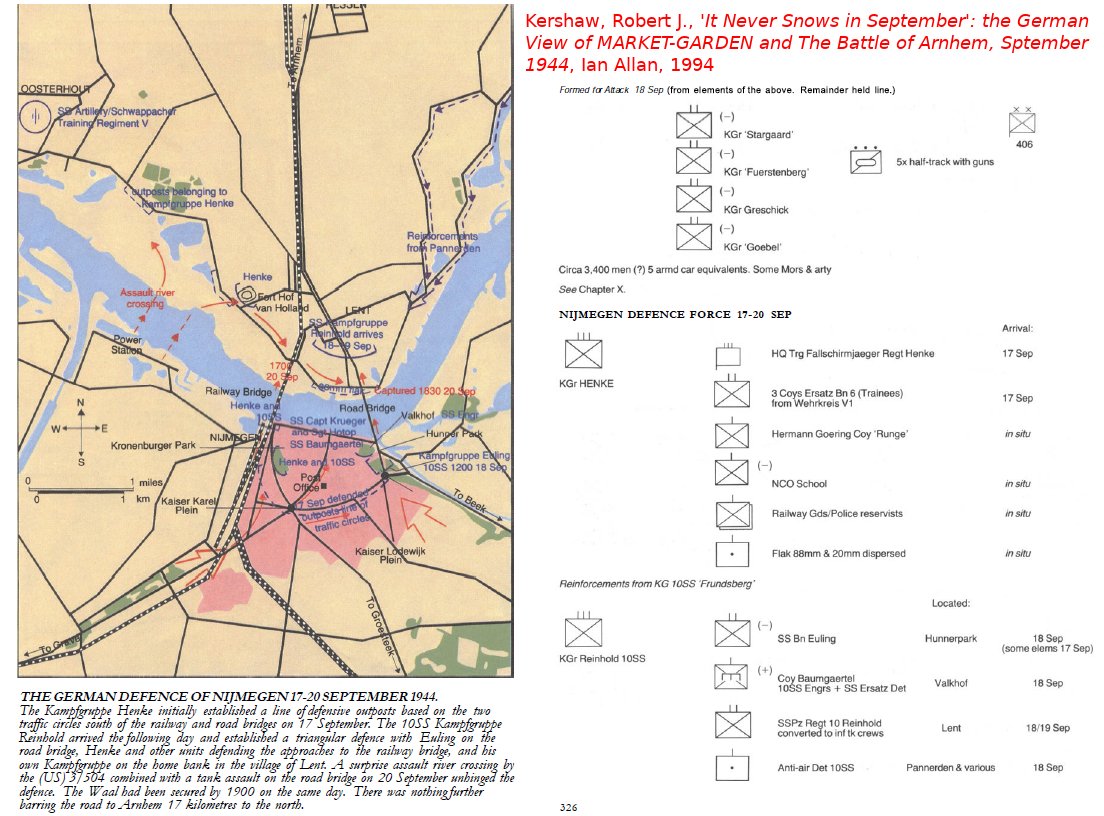
Therefore no actual AFU Divisions (or higher) either as temporary 'shell' or established formations
Many Ukrainians are aware of this anomaly. Taras Chmut, a ranked AFU NCO, perceives the problem but knows it was unlikely to be addressed, much less solved, during full-scale war
Many Ukrainians are aware of this anomaly. Taras Chmut, a ranked AFU NCO, perceives the problem but knows it was unlikely to be addressed, much less solved, during full-scale war
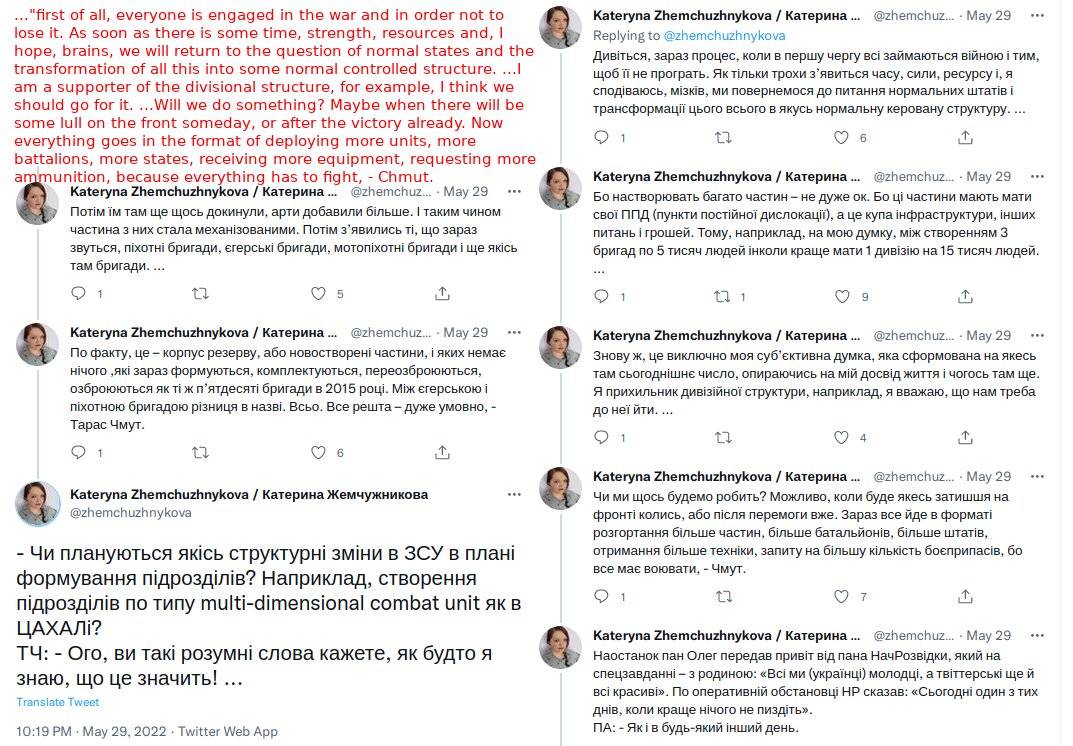
In any case, Taras was himself much busier hustling expensive donations to the front, and it seemed a nice little earner
...especially where he could also jaunt over to Congress to raise more funds and equipment, and see Adam Kinzinger's Third Reich weapons collection


...especially where he could also jaunt over to Congress to raise more funds and equipment, and see Adam Kinzinger's Third Reich weapons collection

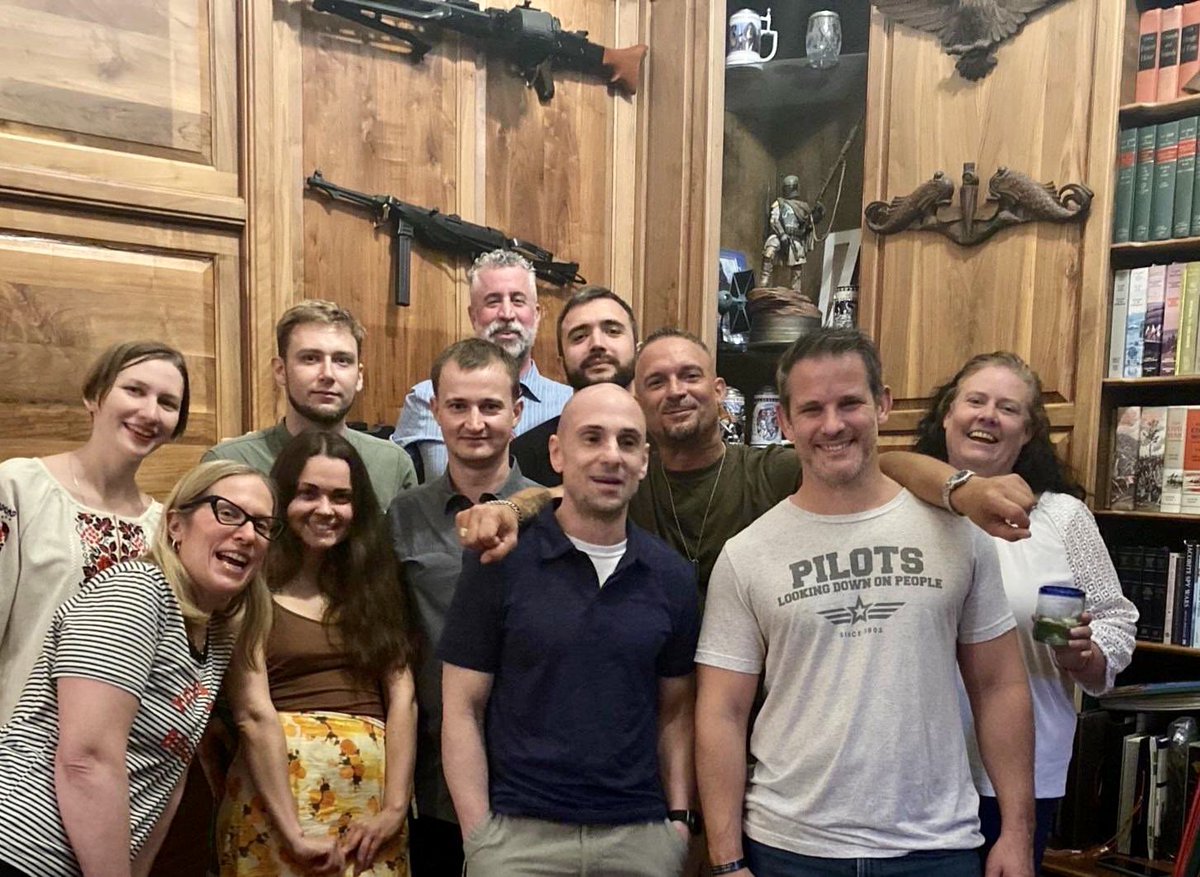
The division anomaly gave the AFU a dangerous Kampfgruppe habit. How did this happen?
Was it misreading (by Kagan's sons?) of COL Macgregor's sophisticated prescriptive advice for US Army restructure into more flexible expeditionary forces? (NB: 'disestablish' is not 'abolish')
Was it misreading (by Kagan's sons?) of COL Macgregor's sophisticated prescriptive advice for US Army restructure into more flexible expeditionary forces? (NB: 'disestablish' is not 'abolish')
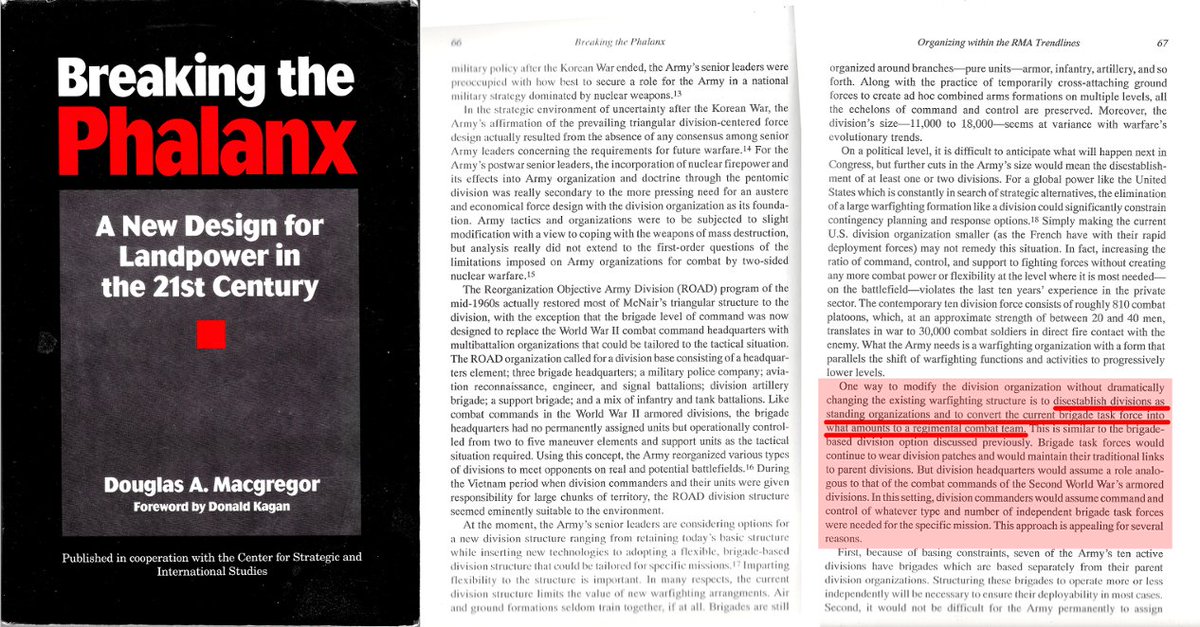
In any case the die was cast: AFU division and corps formations no longer existed (reserve "corps" were mere extensions of a mobilization process, not as deployed commands)
With such an establishment of bases and formations, field command would have to be improvized. But how?
With such an establishment of bases and formations, field command would have to be improvized. But how?
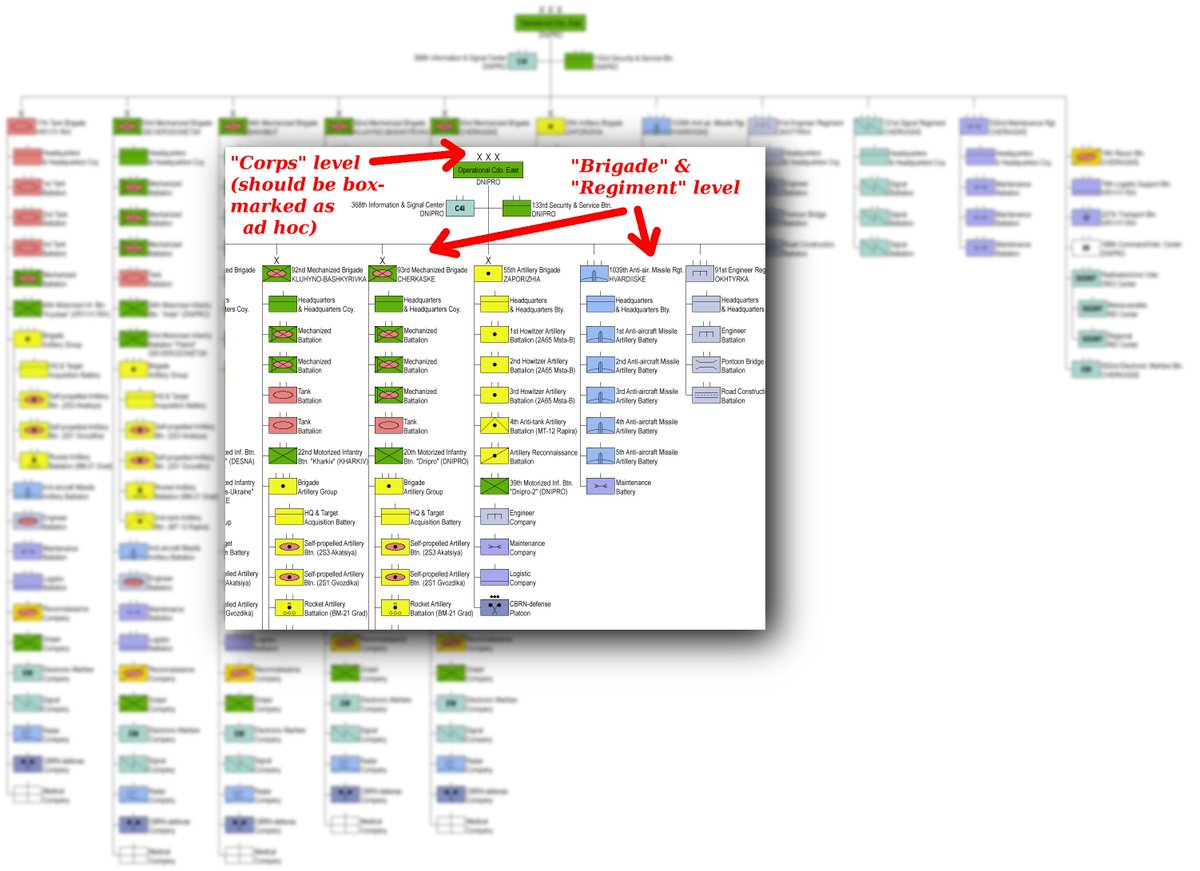
The above wiki ORBAT seems to show 'Operational Commands' (OC) making corps HQ for field deployment
But OCs are regional base administrations overseeing mobilization, training and kit issue. OCs contribute field command at most by detaching some individual commanders and staff
But OCs are regional base administrations overseeing mobilization, training and kit issue. OCs contribute field command at most by detaching some individual commanders and staff
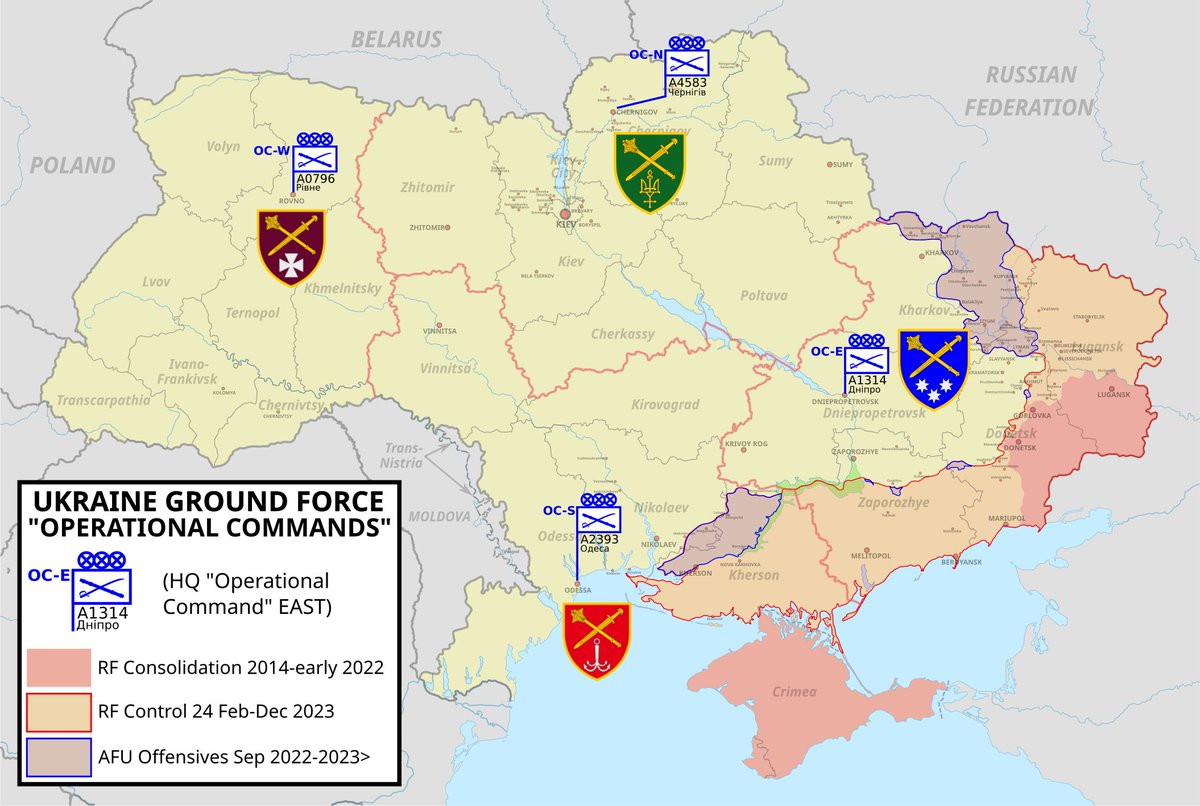
In an example of the latter case OC South appears to have done just that, helping back up and understudy deployed field HQ by preparing ex-36 Marine Brigade chief Andrei Gnatov
Gnatov reportedly went from Deputy Chief OC-S into latest Commander OSUV Odesa (formerly Alexandria)
Gnatov reportedly went from Deputy Chief OC-S into latest Commander OSUV Odesa (formerly Alexandria)
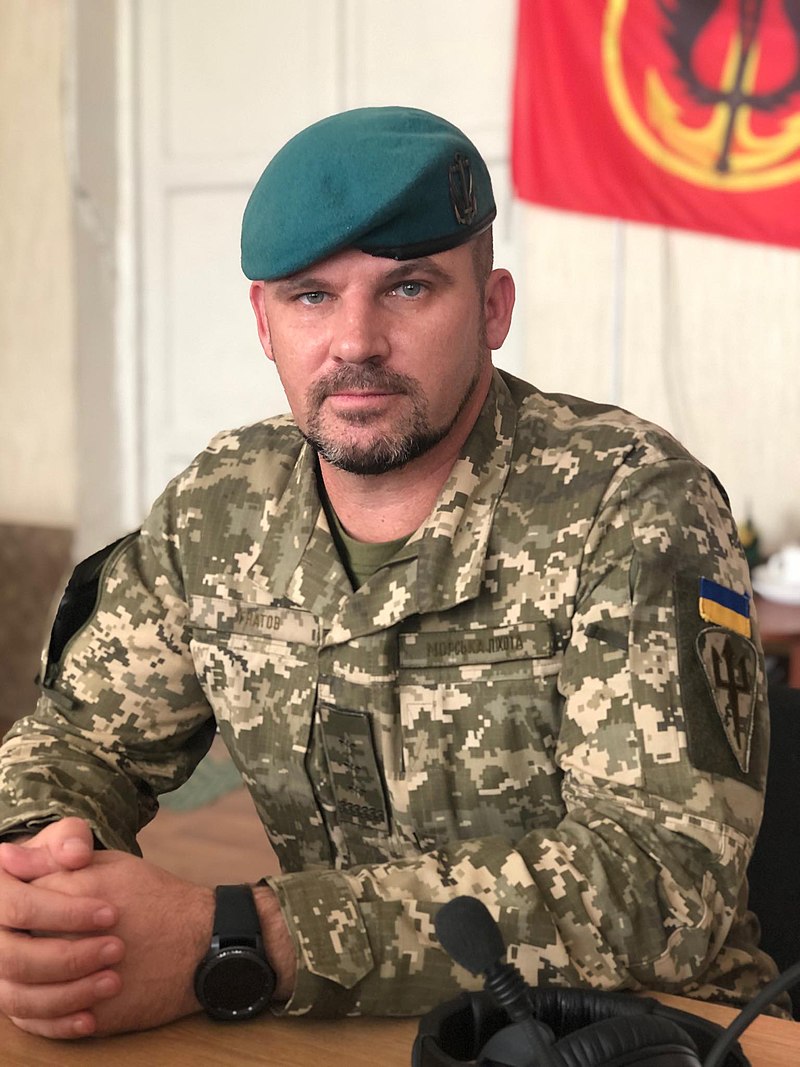
Gnatov had apparently replaced Major General Eduard Moskalyov, who had reportedly been appointed there earlier in the year
Note the rank: the only OSUV chief in this period with two pips
Note the rank: the only OSUV chief in this period with two pips
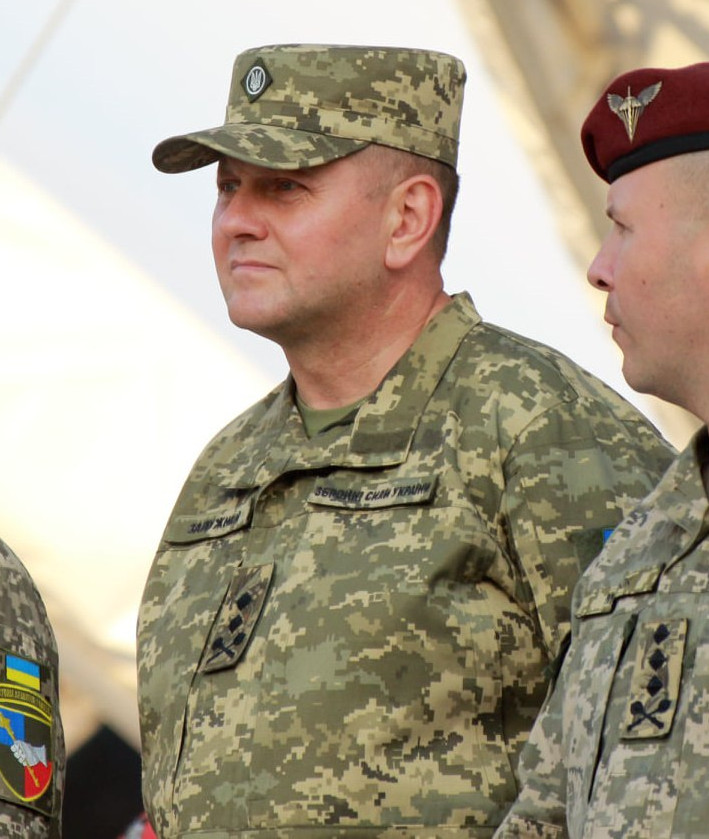
The sheer size and scale of pre-SMO OCs, with nearly twenty directly subordinate formations, all but confirmed they performed no actual operational command
However, OCs facilitated ad hoc groups' creation in the field and the foundation of provisional commands for contingencies
However, OCs facilitated ad hoc groups' creation in the field and the foundation of provisional commands for contingencies
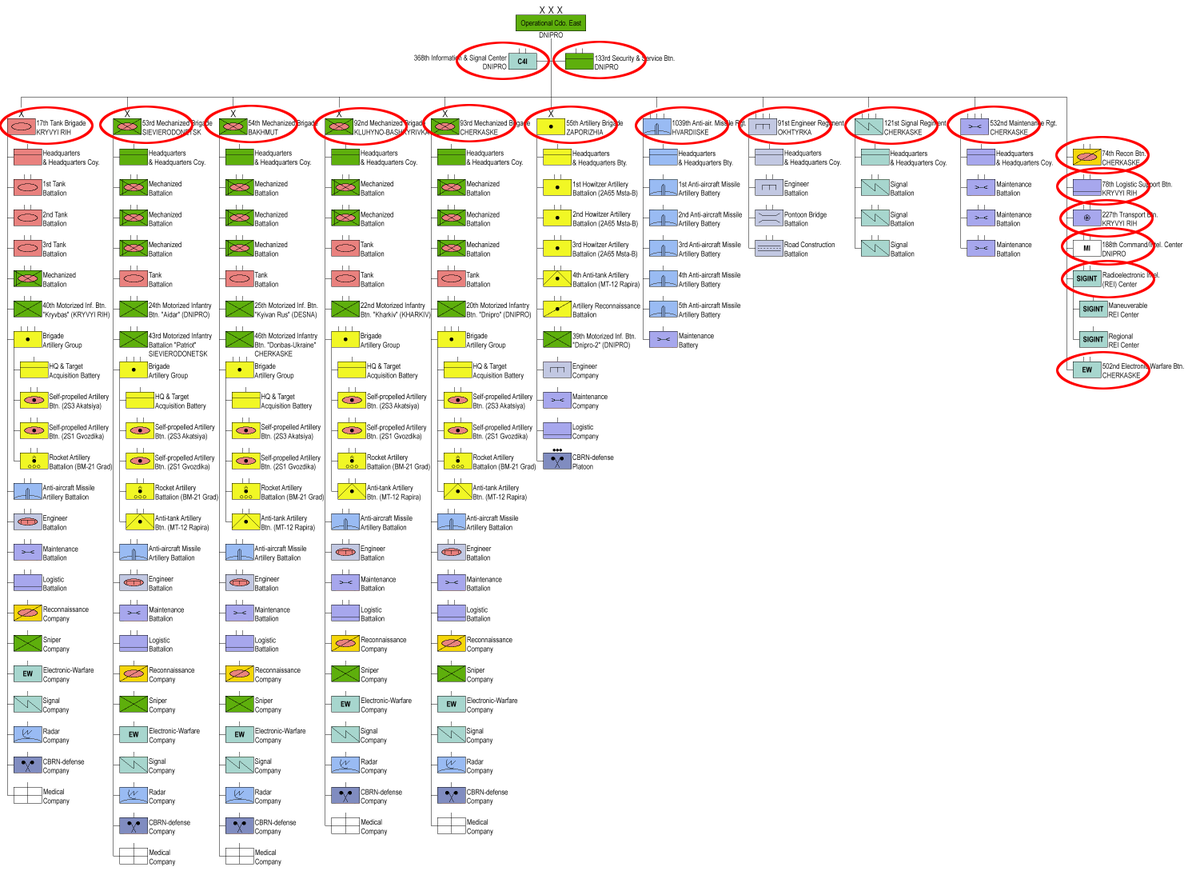
And yet the AFU insist on calling these entities "operational commands" (Оперативні командування)!
The confusion is such that it can invoke map detail using Indonesian modification of Cold War-era standard NATO symbols


The confusion is such that it can invoke map detail using Indonesian modification of Cold War-era standard NATO symbols
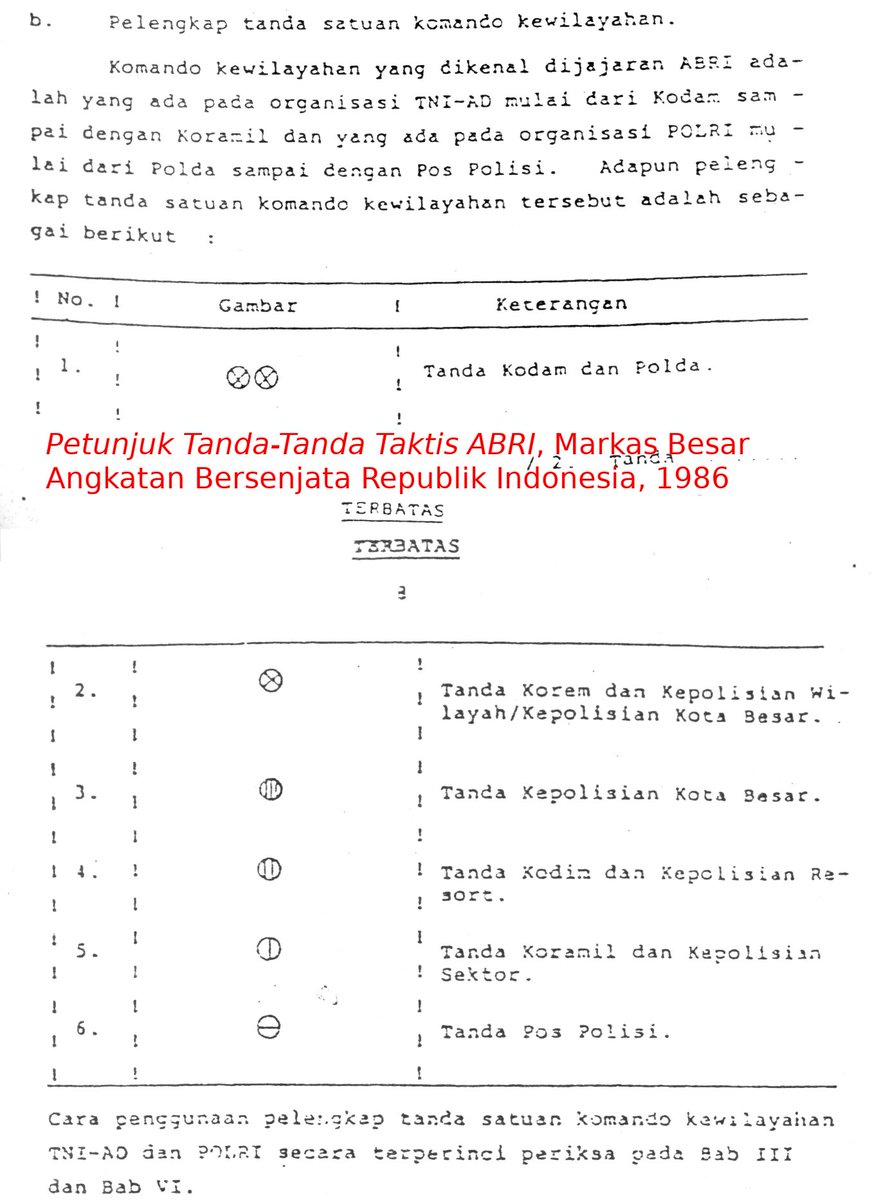
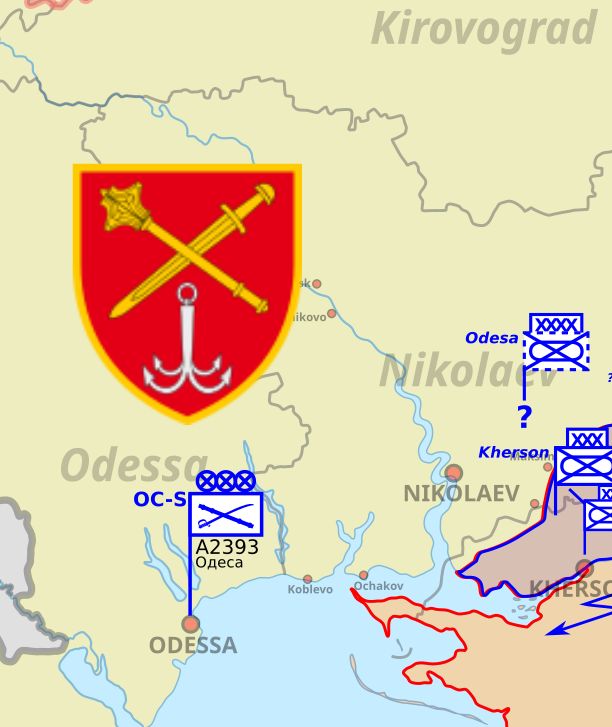
Another key function of the OCs is publicity: that task has even been performed by them while overseas
https://twitter.com/timand2037/status/1523131510932393984
AFU FIELD COMMAND
So how do the AFU's ad hoc groupings appear as a simple hierarchy at the highest level?
On the surface it may seem that OSUV (Strategic Op Commands), the highest field commands, match the OCs' areas of responsibility: both OCs and OSUVs total four HQs each
So how do the AFU's ad hoc groupings appear as a simple hierarchy at the highest level?
On the surface it may seem that OSUV (Strategic Op Commands), the highest field commands, match the OCs' areas of responsibility: both OCs and OSUVs total four HQs each
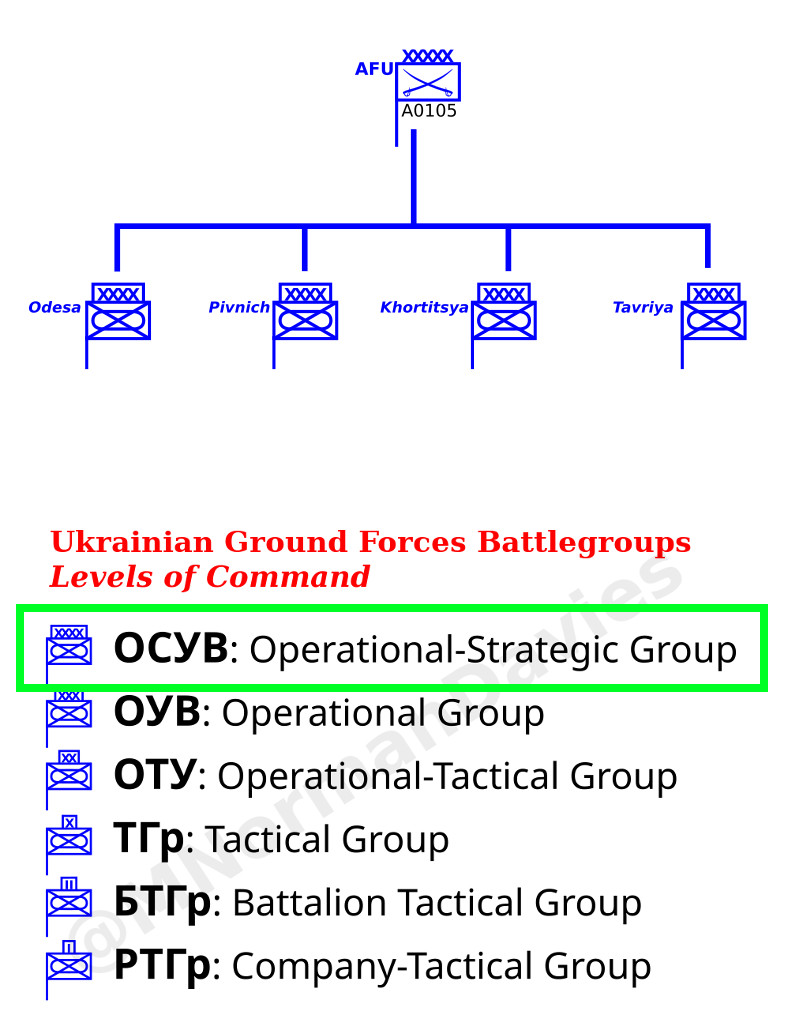
OCs' boundaries are an administrative or cadastral apportionment of oblasts, distributed literally around the country, and not necessarily derived by any actual operations or assessed enemy threat 

In practice OCs and OSUVs are very different
OSUV boundaries, insofar as they can be discerned here, follow OC borders only where overlap may be convenient
OSUV boundaries, insofar as they can be discerned here, follow OC borders only where overlap may be convenient
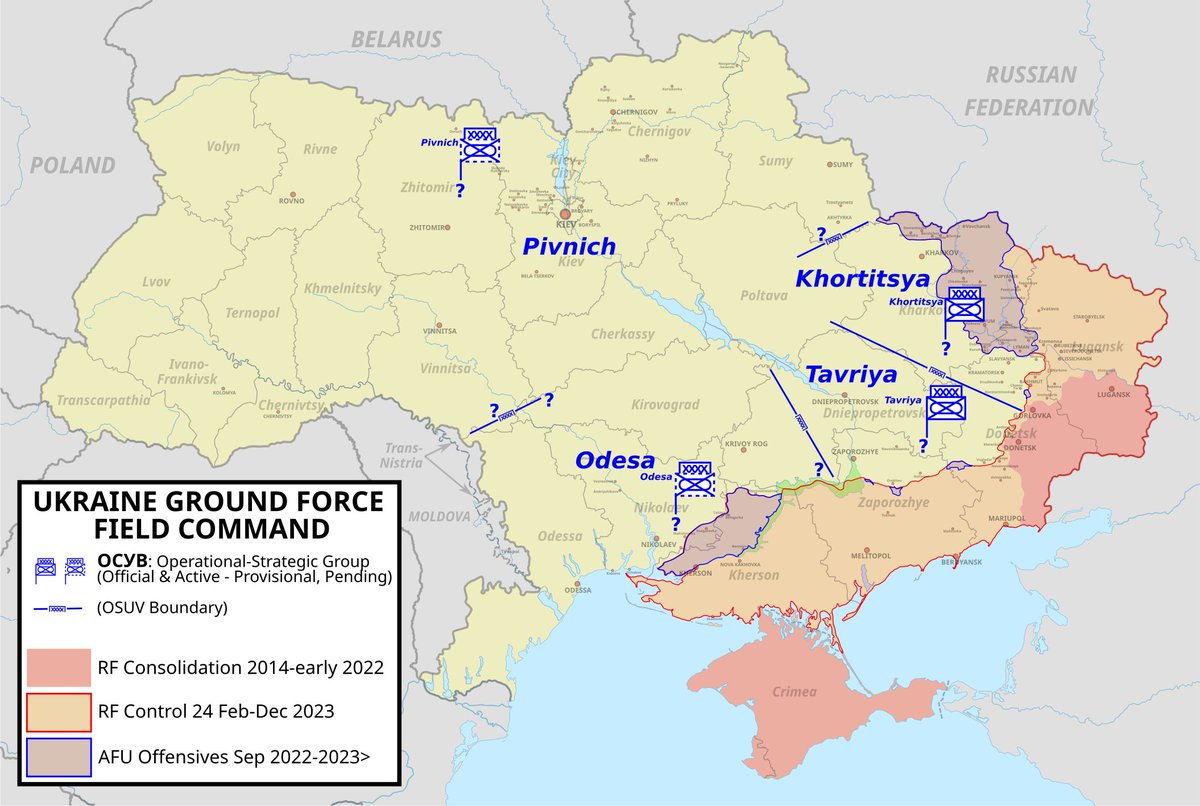
Again, confusion is inevitable in the instance of one military-administrative OC and another field command OSUV overlap on different boundaries but use the same generic title 'Pivnich' (North)
In fact, the vast OSUV Pivnich may be one of the most challenging AOs in history
In fact, the vast OSUV Pivnich may be one of the most challenging AOs in history
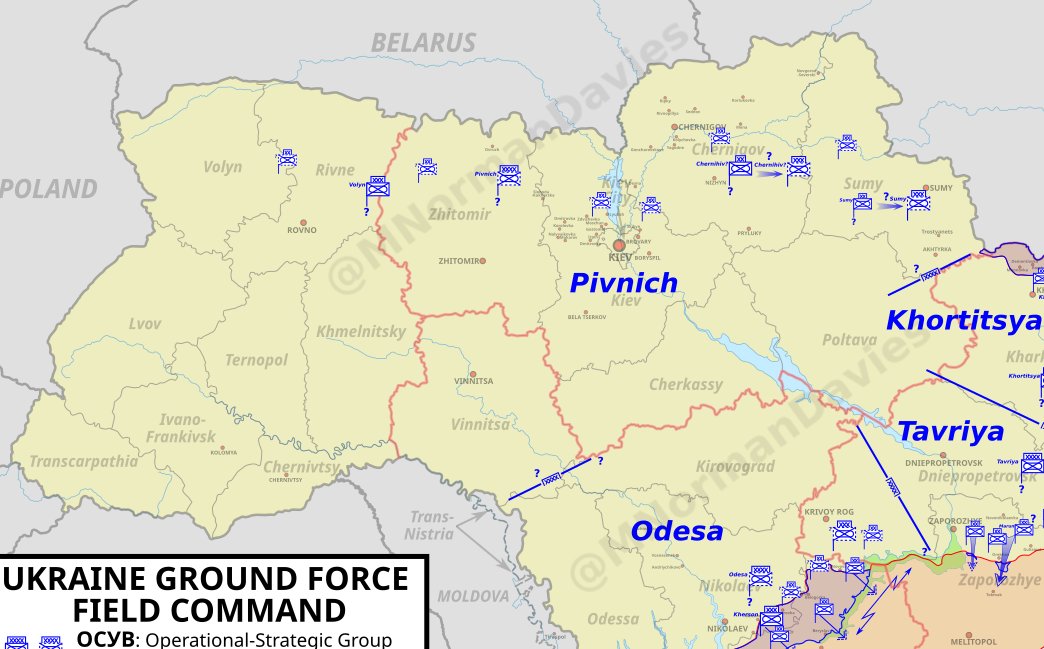
Regular aerial and DRG raids keep OSUV Pivnich nervous
Eventually things seemed to have got grimmer than usual since the chief of that vast AO, Sergei Naev, started taking over the chaplain's tasks


Eventually things seemed to have got grimmer than usual since the chief of that vast AO, Sergei Naev, started taking over the chaplain's tasks
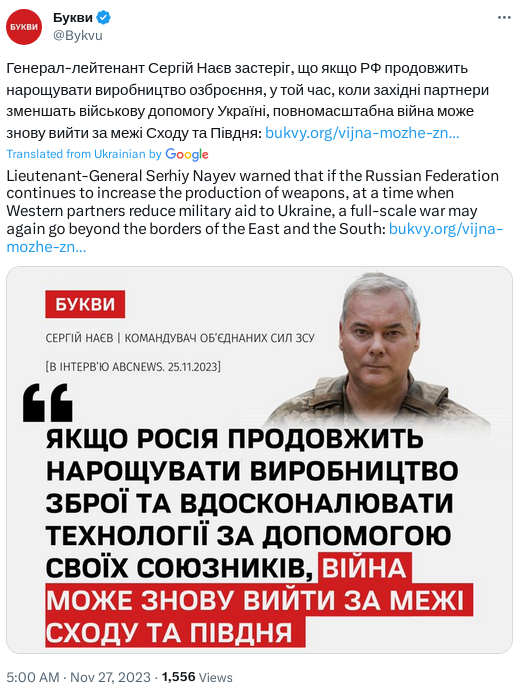
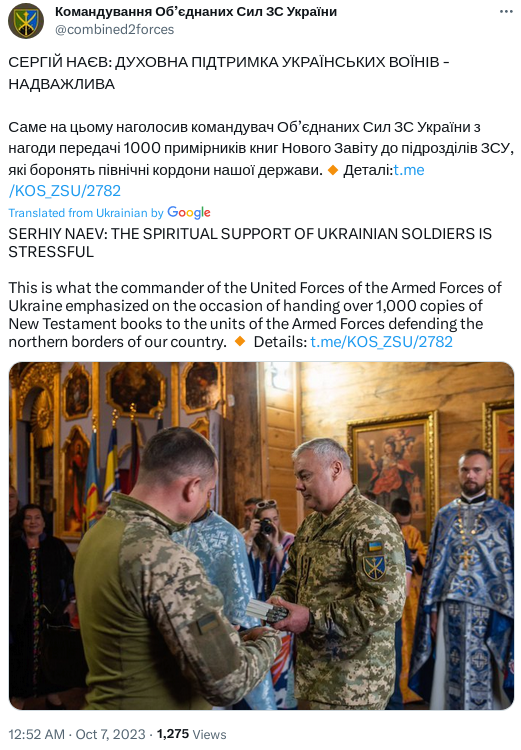
Political priorities seem to ensure the northern administration fits a major-general rank (Krasylnykov)
...which in turn demands the next higher lieutenant-general rank (Naev)


...which in turn demands the next higher lieutenant-general rank (Naev)
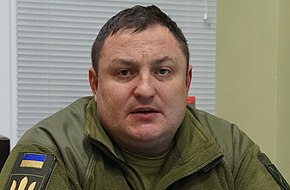
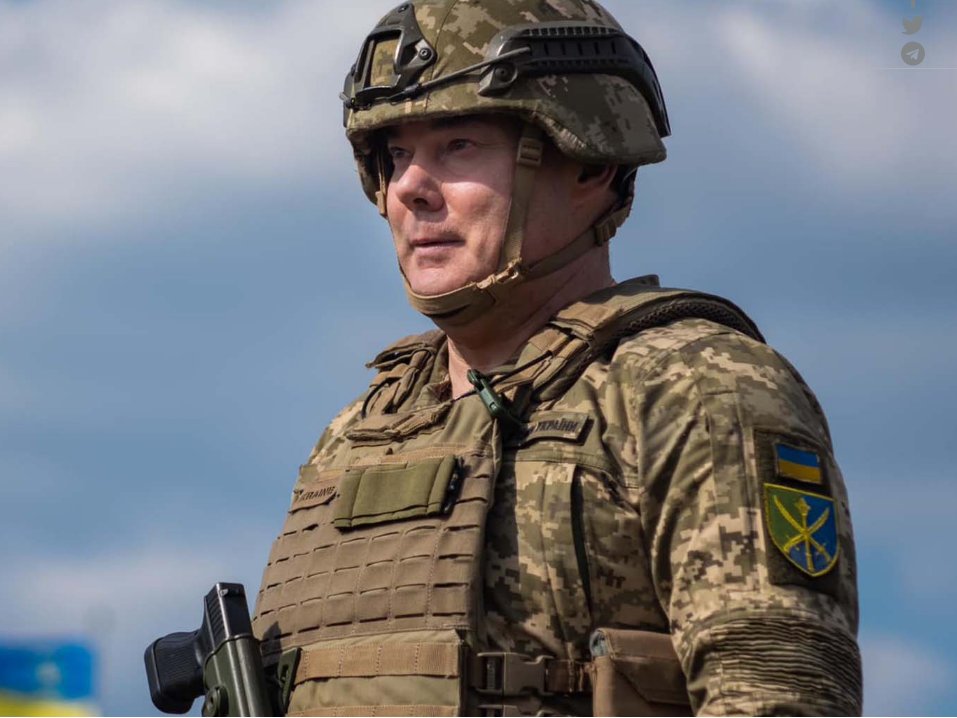
Further, the OSUV field commands are effectively at 'Army' level with all effort to augment them via mass mobilization of reserves, conscripts, and volunteers
Another 'political' anomaly: extremely uneven ranks. This would allow Kiev to more easily manipulate command and staff
Another 'political' anomaly: extremely uneven ranks. This would allow Kiev to more easily manipulate command and staff

DIVIDE AND RULE
At the highest ranks Kiev clearly played generals against one another. Zaluzhny's and Syrsky's positions were anomalous if not absurd
Syrsky wore a 'Colonel-General' epaulette , a rank apparently improvized, but its 4 pips deliberately on par with Zaluzhny's
At the highest ranks Kiev clearly played generals against one another. Zaluzhny's and Syrsky's positions were anomalous if not absurd
Syrsky wore a 'Colonel-General' epaulette , a rank apparently improvized, but its 4 pips deliberately on par with Zaluzhny's
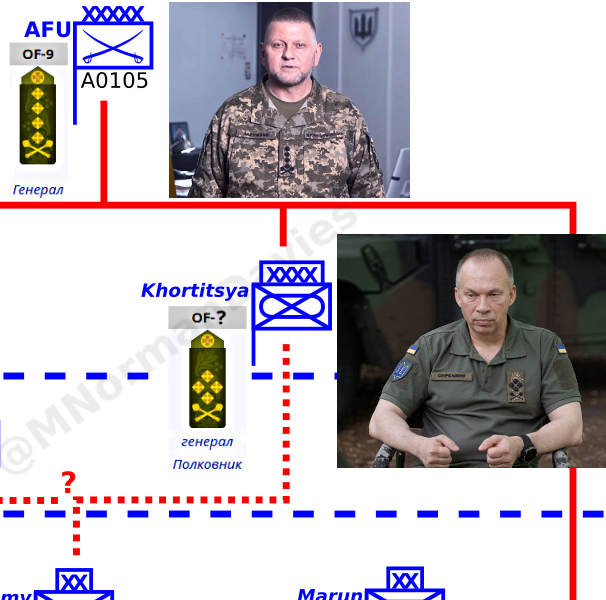
This arrangement at the AFU's peak set up obvious instability as an exemplary norm, but unstable and vague authority permeates AFU higher field command
Unclear responsibilities appear among vast disparities, and broad discretion, between all OSUV ranks and command functions
Unclear responsibilities appear among vast disparities, and broad discretion, between all OSUV ranks and command functions
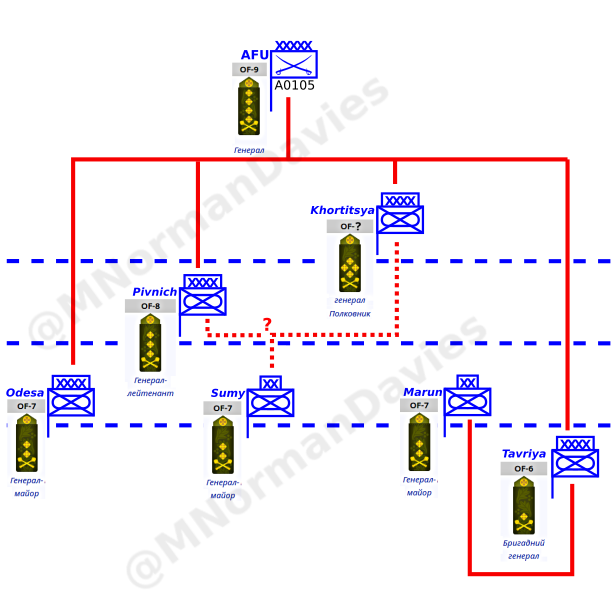
Nowhere were these features more striking than in the AFU's southeastern command - OSUV Tavriya
In stark contrast to Syrsky's previous perch at the hierarchy's peak alongside Zaluzhny, Tavriya has been headed by a Brigadier-General (Tarnavsky), at the lowest of general ranks
In stark contrast to Syrsky's previous perch at the hierarchy's peak alongside Zaluzhny, Tavriya has been headed by a Brigadier-General (Tarnavsky), at the lowest of general ranks
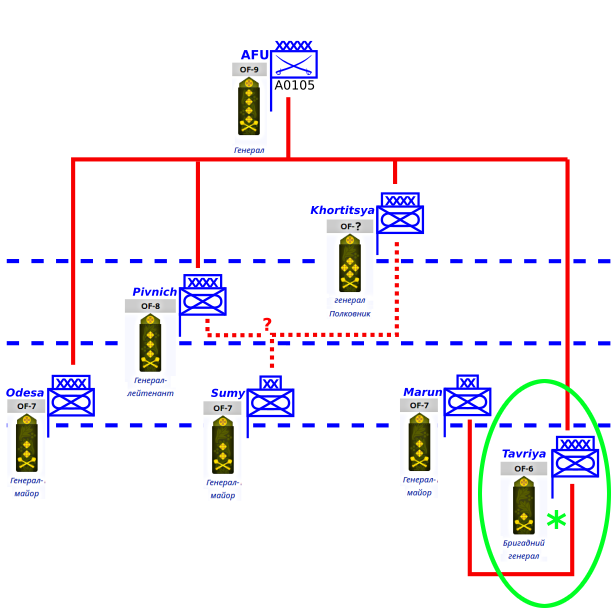
Yet the Brigadier was himself outranked by his new subordinate deployed to Zaporozhye Oblast to lead the much-vaunted counteroffensive at the Tokmak Axis!
(note that I previously used "OSU" for "OSUV" - I since reverted to the closest transliteration)
(note that I previously used "OSU" for "OSUV" - I since reverted to the closest transliteration)
https://twitter.com/MNormanDavies/status/1744276784529768570
Field command's next level below OSUV is the OUV (Op Group). Some OUVs are clearly shell or provisional status, especially in the north where anticipating worst-case attacks while responding to incursions by DRG (Recon-Sabotage) teams
OUV is corps level but very flexible
OUV is corps level but very flexible
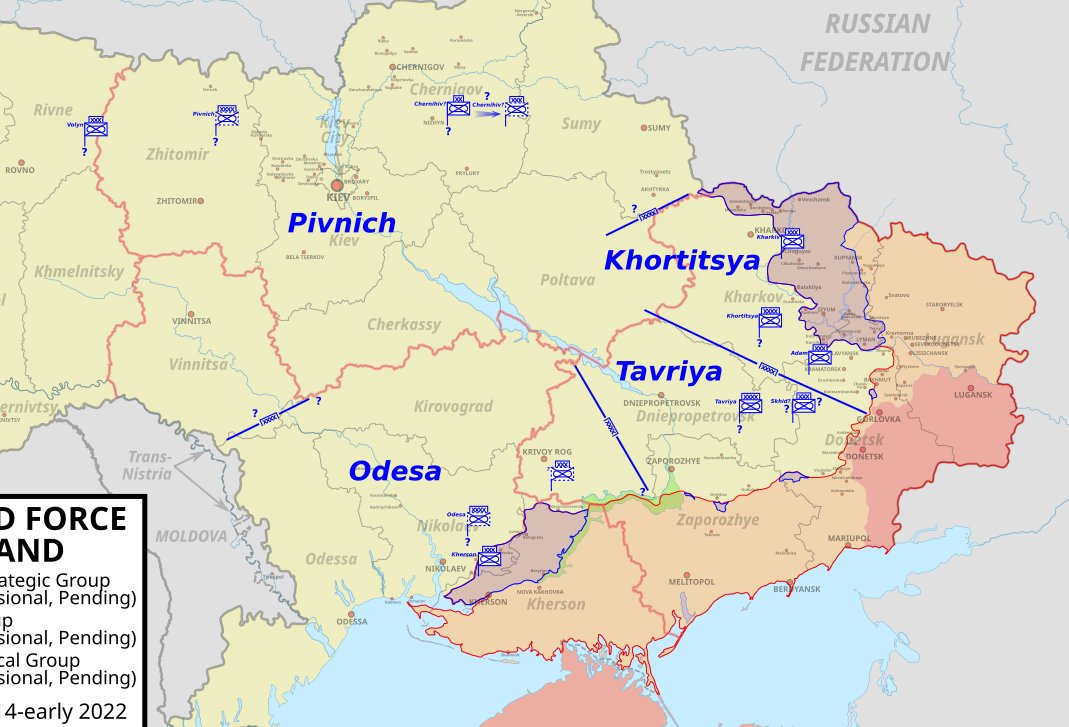
Whereas Khortitsya under Syrsky was the more complete organization with two OUV commands, reporting used in this study has been less clear for the southeast front's OSUV Tavriya
An OUV may cover Avdeevka-Marenka as lower priority in static tasks for autonomous brigade groups
An OUV may cover Avdeevka-Marenka as lower priority in static tasks for autonomous brigade groups
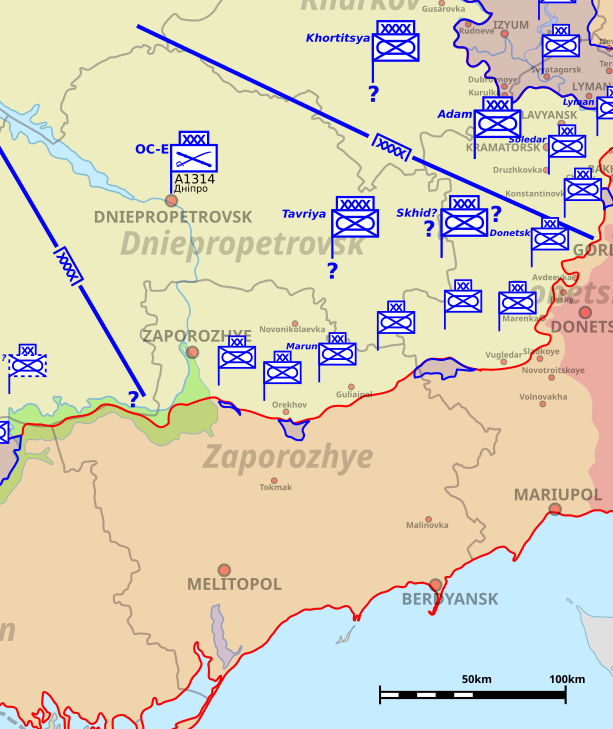
Similarly at the Kherson Front, minimal OUV presence is identified, likely provisional to suit limited recon and feint tasks
The very process of creating OUV and other HQ elements would itself amount to a feint in order to effect Russian anticipation of greater effort against the Dniepr's left bank
The very process of creating OUV and other HQ elements would itself amount to a feint in order to effect Russian anticipation of greater effort against the Dniepr's left bank

A more challenging subject is Sumy Oblast, which created an OTU ('Op-Tac Gp') early in the SMO
The command has long been on alert to DRG incursions, while its proximity to Kharkov Oblast's northern front meant routine staging for deployments, reliefs, and some rehab for wounded
The command has long been on alert to DRG incursions, while its proximity to Kharkov Oblast's northern front meant routine staging for deployments, reliefs, and some rehab for wounded

OTU Sumy lies at a hinge in the front where it could have already changed subordination, and raised to OUV status, in order to meet greater threat
Neighboring Chernigov is a parallel command in a similar alert state
Neighboring Chernigov is a parallel command in a similar alert state
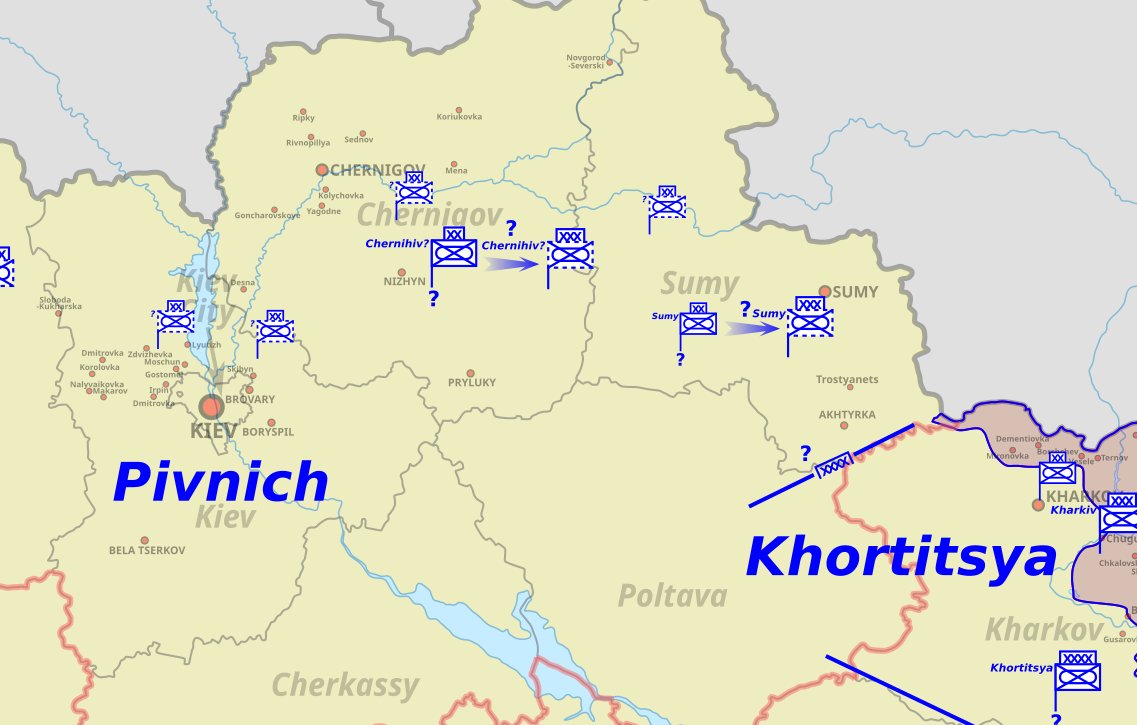
Under OUV (or directly under OSUV, as applicable), the OTU formations above brigade form the real standard of command across the AFU's front
This was long evident in the three pre-SMO Donbass OTUs: Lugansk, Donetsk and Mariupol
This was long evident in the three pre-SMO Donbass OTUs: Lugansk, Donetsk and Mariupol

On a relatively stable front from 2014-February 2022, the higher command was much more easily combined onto the pre-existing OC East in Dniepro 
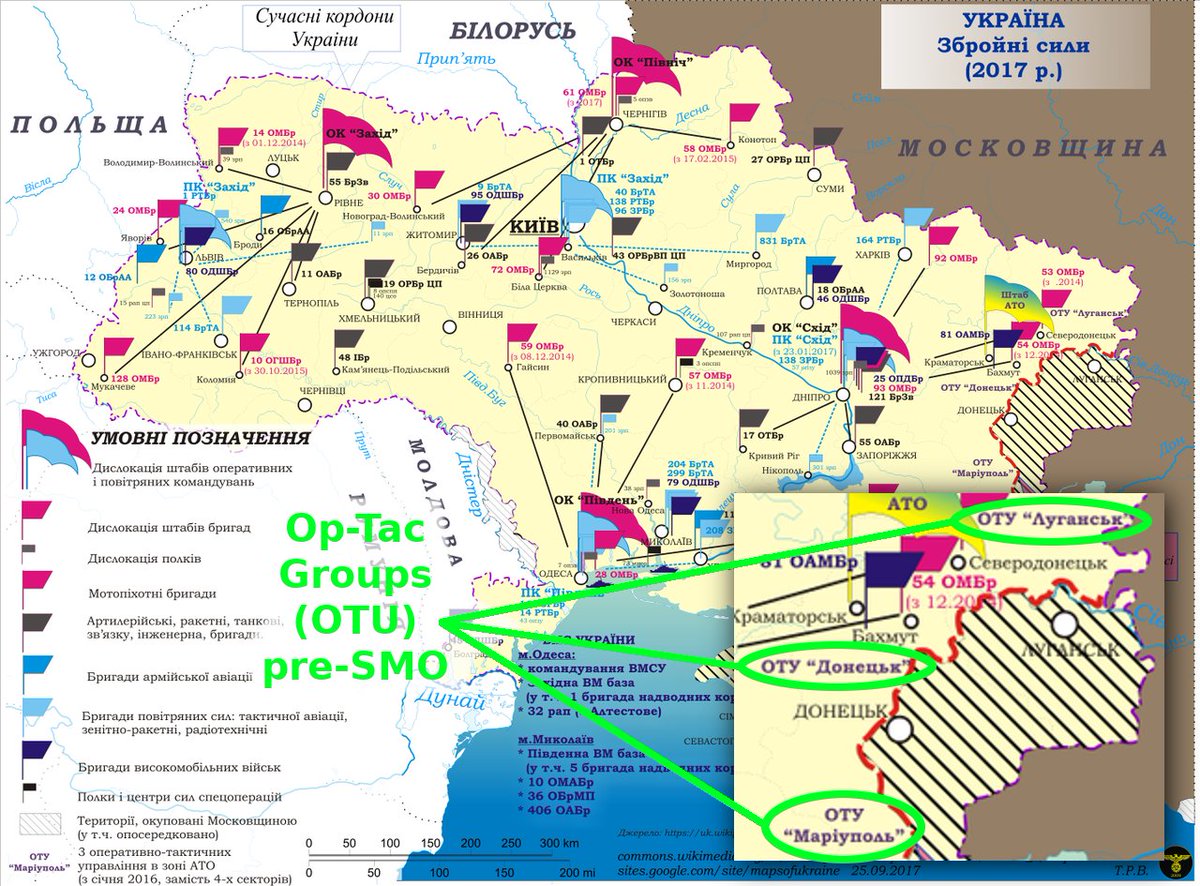
Upon SMO on 24 Feb 2022, the OTUs were all but overwhelmed, reforming eventually into the expanded commands of today
By turn the already deployed brigades bled fast and bloated with mobilized reserves, but a deeper front line compelled much closer supervision and control
By turn the already deployed brigades bled fast and bloated with mobilized reserves, but a deeper front line compelled much closer supervision and control

Another discernible development was the (predictable) upscaling of brigade HQ into OTU command and staff, as in the case of 56 MR Bde
This shift occurred either during or after the brigade's chaotic early-SMO mauling in the southeast
This shift occurred either during or after the brigade's chaotic early-SMO mauling in the southeast

Ad hoc AFU commands are often furtive, probably believing a lack of organizational clarity aids security
The generic 'Tac Gp' term can apply to various formations, like Syrsky's ADAM. This study is meant merely as a preliminary base for research and is hardly conclusive detail
The generic 'Tac Gp' term can apply to various formations, like Syrsky's ADAM. This study is meant merely as a preliminary base for research and is hardly conclusive detail

Although all AFU command irregularities and rank disparities may seem to give an impression of freewheeling amateurism, the political intent becomes obvious
Higher command is deterred from ever presenting a united front, and all the danger that would entail for Kiev (and NATO)
Higher command is deterred from ever presenting a united front, and all the danger that would entail for Kiev (and NATO)
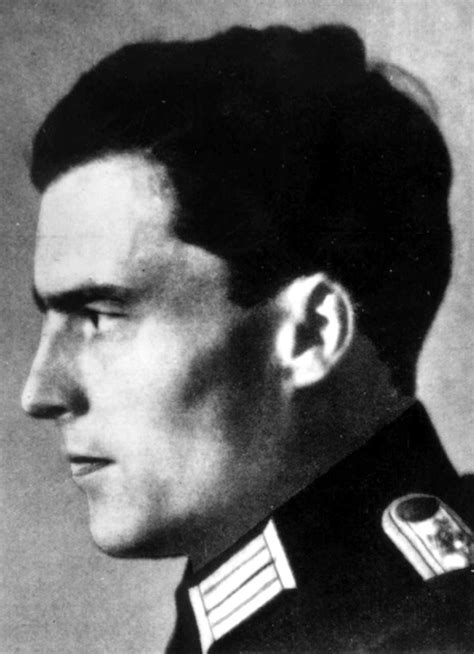
And so back to the replacement of AFU figurehead Zaluzhny
It seems likely Zaluzhny was compensated generously for leaving without making trouble. That, along with luxury in the Canary Islands and Chile, would help keep him quiet into the future too (props to @MeridionaliAura)


It seems likely Zaluzhny was compensated generously for leaving without making trouble. That, along with luxury in the Canary Islands and Chile, would help keep him quiet into the future too (props to @MeridionaliAura)
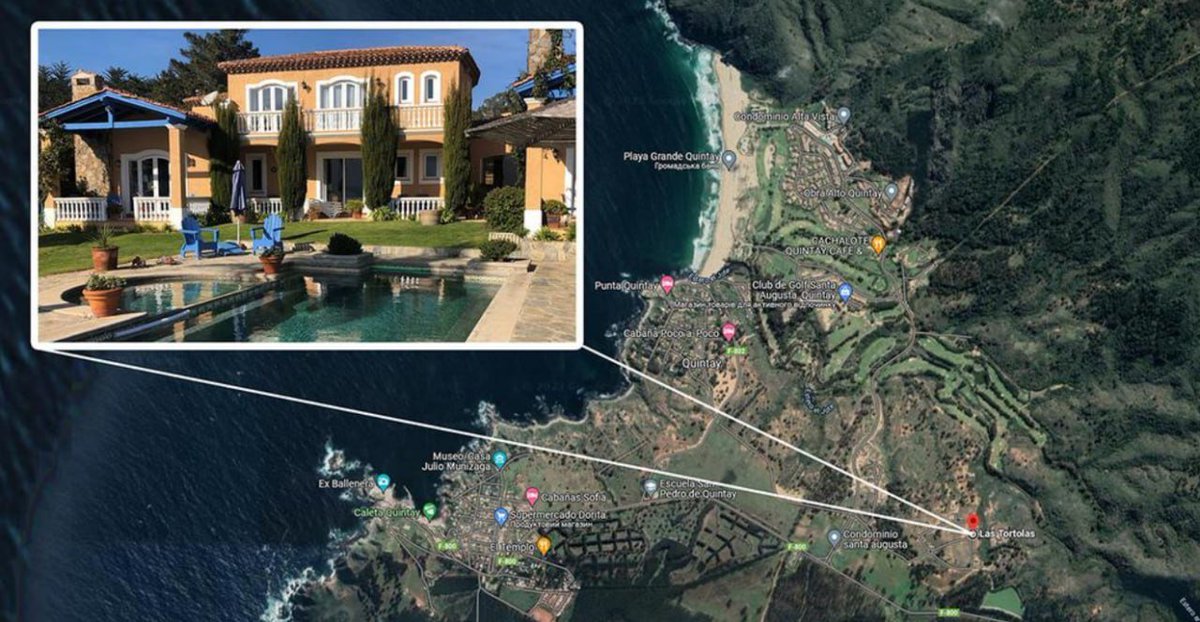
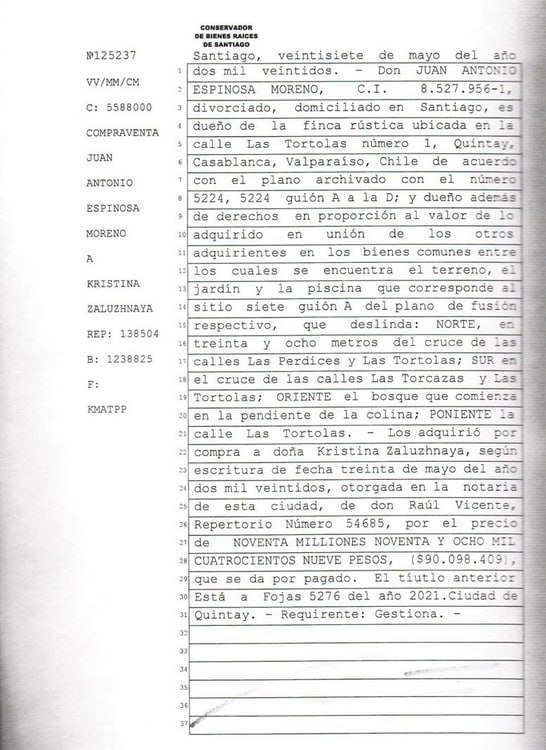
Syrsky's rise, on the other hand, appears more a poisoned chalice
He is of a Russian family and background, and ex-Soviet. As the war descends deeper into Ukraine's devastation and defeat Syrsky may be the perfect scapegoat (an insight by @failure1991 at least a few months ago)
He is of a Russian family and background, and ex-Soviet. As the war descends deeper into Ukraine's devastation and defeat Syrsky may be the perfect scapegoat (an insight by @failure1991 at least a few months ago)
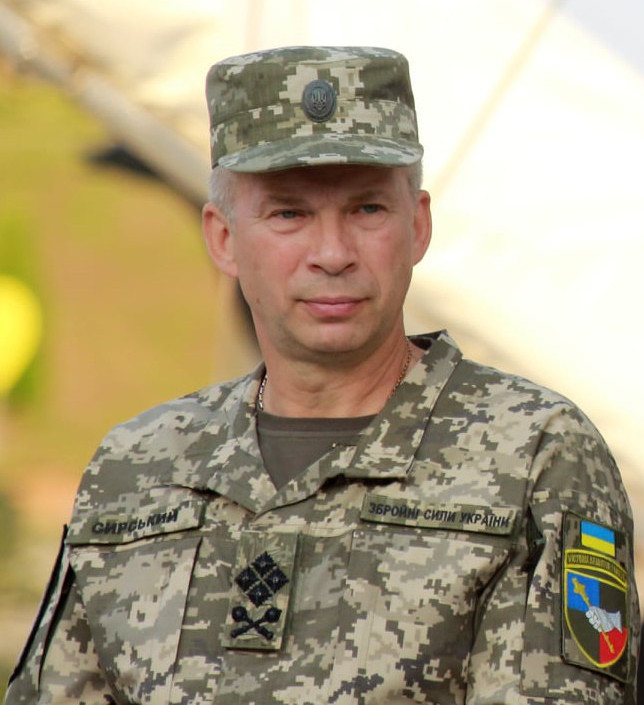
Syrsky ran Kiev's longest, bloodiest meat grinder in a ruthless campaign at Bakhmut and the close-fed north flank
With no Pravy Sektor network like Zaluzhny's, Syrsky's obedience may not be enough to give him a future. He may end up sacrificed like Byzantine general Belisarius
With no Pravy Sektor network like Zaluzhny's, Syrsky's obedience may not be enough to give him a future. He may end up sacrificed like Byzantine general Belisarius

• • •
Missing some Tweet in this thread? You can try to
force a refresh






















